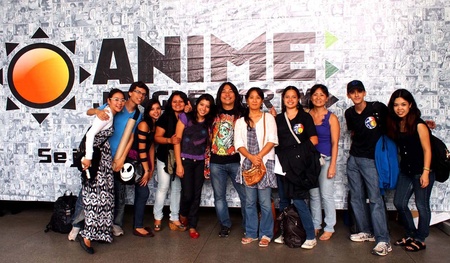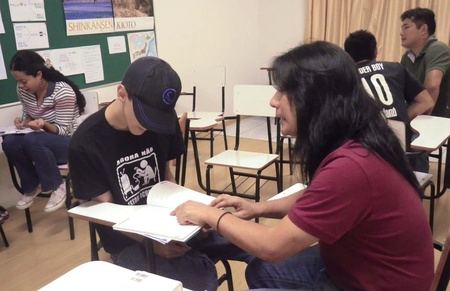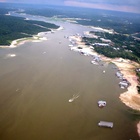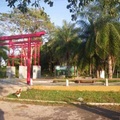I was dispatched as a senior Japanese language education volunteer to the Western Amazon Japan-Brazil Association (commonly known as Japan-Brazil) in Manaus, Amazonas, and the first thing I did was to observe about 40 Japanese language classes that were held every week. The students' levels varied, from those who struggled with writing and reading hiragana to those who spoke to me in fluent Japanese, but it was impressive to see everyone enjoying learning Japanese and Japanese culture.
The efforts of local teachers to create a bright atmosphere in the classroom also contribute to the students' curiosity and motivation.
In order to help students learn more about Japan, maps of Japan, Japanese calendars, and illustrations showing origami and how to greet people are posted on the walls of each classroom, and fun lessons are held in this environment.
Japanese posters and calendars made on high-quality paper featuring traditional Japanese fireworks, autumn leaves, bullet trains, Mount Fuji, and views of Kyoto are helping to pique the curiosity of students who dream of visiting Japan.
Also, in the classroom of a teacher who likes anime, the walls were covered with flashy posters. I wonder if students can concentrate on studying while being stared at by anime characters...
The students have various goals in learning Japanese. Students of completely different ages and backgrounds gather here.
Those working for local Japanese companies told me that they wanted to get closer to Japanese expatriates. Their goals vary from those who need a high level of Japanese for meetings to those who simply want to communicate with Japanese employees. In fact, there are more than 30 Japanese companies operating in Manaus.
One student told us that he wanted to master Japanese, as well as French, German, Spanish, etc., in order to deal with Japanese tourists in Manaus, the base for Amazon River tourism. He sells accessories in Ponta Negra, a tourist destination on the banks of the Amazon River.
The overwhelming majority of students are teenagers. In recent years, the anime boom has made many fans of Japanese subculture, including J-pop, movies, and cosplay. They have a strong admiration for Japan and show up to class wearing T-shirts featuring their favorite manga and anime.
In today's world, the Internet makes it easy to get information from anywhere in the world, and their knowledge of anime and manga far exceeds our imagination. Most young people know "Naruto," "One Piece," and "Saint Seiya," which are also broadcast in Portuguese. I was also surprised to learn that special effects shows that are almost unfamiliar to Japanese people, such as "Jaspion," "Changeman," and "Jiraiya," are popular in Brazil.
One day, at a Japanese-Brazilian class, I met a pair of elementary school-aged brothers who had just returned from Hamamatsu. They had attended public elementary schools in Japan for several years and could speak fluent Japanese, but they said they would continue to study so as not to forget the Japanese they had worked so hard to learn.
There are many people in Brazil who have returned from Japan to work. Some have made happy memories in Japan, while others have not been able to fit in. Most of the students who attend the Japan-Brazil School are pro-Japan, and many of them want to return.
A Brazilian woman who had lived in Japan for several years as the wife of a Japanese-Brazilian returned to Brazil after her divorce. Now that she is no longer a part of the Japanese-Brazilian family, it is no longer easy for her to travel to Japan, but she enjoys her Japanese language classes and attends them every week.
In one class, I met a couple in their 30s who were studying Japanese together. The husband is of Japanese descent and can speak a little Japanese, but the wife is a local Brazilian and cannot speak Japanese at all. I asked her, "Why did you decide to study together?" She replied with a laugh, "My husband's mother is an immigrant from Japan and is very kind to me. I started studying Japanese because I wanted to understand the Japanese she uses at home."
Nikkei people have a wide range of lives. In this column, we will continue to introduce the various ways in which Japan and Brazil are connected.
© 2015 Toshimi Tsuruta










